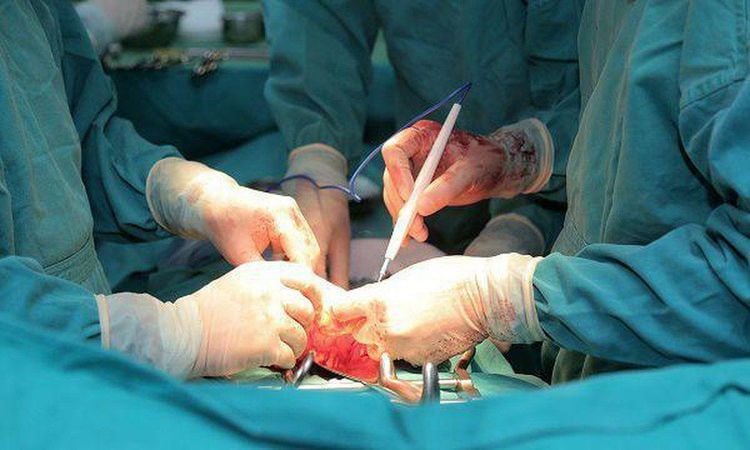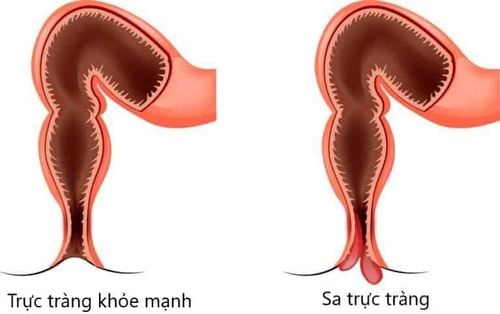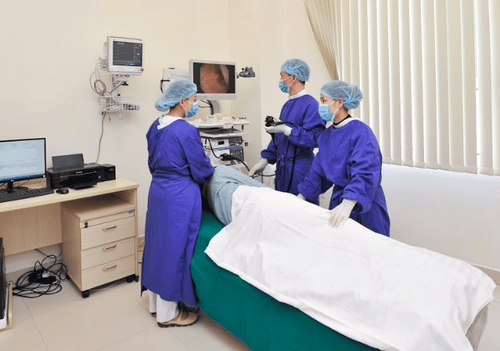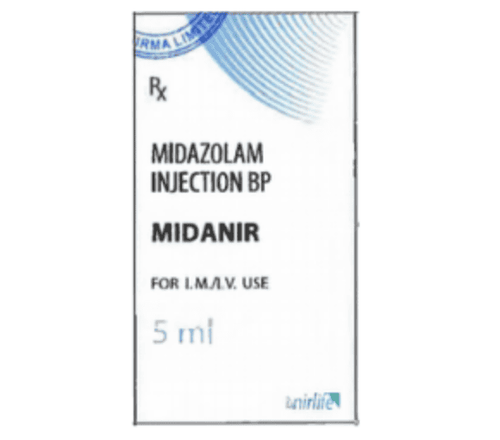This is an automatically translated article.
Post by Master - Doctor Mai Vien Phuong - Head of Gastrointestinal Endoscopy Unit - Department of Medical Examination and Internal Medicine - Vinmec Central Park International General Hospital.
Rectal prolapse is a medical condition where the rectum begins to push through the anus. The rectum is the last part of the large intestine, and the anus is the opening for stool to pass out of the body. Rectal prolapse affects about 2.5 people out of 100,000. Women over the age of 50 are six times more likely to develop this disease than men. It is often suspected to be a serious case of hemorrhoids.
1. Symptoms of rectal prolapse
Rectal prolapse can have mild to severe symptoms. Mild cases can often be treated without surgery. Severe cases may require surgery.
Symptoms of rectal prolapse tend to come on gradually. The first symptom you notice is a feeling of a bulge in the anus. It's like you're sitting on a ball.
When you look in the mirror, you can see a pinkish red bulge sticking out or extending outside the anus. Sometimes, during a bowel movement, a small portion of the rectum will protrude but may retract on its own or be easily pushed back into its original position.
Normal physical activity, such as walking, sitting and exercising, can also cause part of the rectum to push through your anus. At first, it can be brought back to the proper position manually.
If rectal prolapse is more severe, bleeding may occur from the inner lining of the rectum. In cases of partial or complete rectal prolapse, you may have difficulty controlling liquid/solid/gaseous bowel movements from the rectum.
Up to half of people with rectal prolapse experience constipation, while the rest may experience constipation and fecal incontinence.

2. Types of rectal prolapse
There are three types of rectal prolapse. Types are determined by the movement of the rectum:
Internal prolapse: The rectum has begun to descend but has not yet pushed through the anus. Partial Prolapse: Only part of the rectum has moved through the anus. Complete Prolapse: The entire rectum prolapses through the anus.
3. Causes of rectal prolapse
Rectal prolapse can be caused by a number of diseases. These include:
Nerve damage:
If the nerves that control the rectum and anal muscles are damaged, rectal prolapse can develop. These nerves can sometimes be damaged by:
Pregnancy or difficult vaginal delivery. Spinal cord injury. Pelvic surgery. Weakened anal sphincter:
This is the muscle that allows stool to pass from your rectum to your anus. Common reasons for this muscle weakness are pregnancy and childbirth, or increasing age.
Chronic constipation:
The strain of chronic bowel movement problems can make your rectum more likely to move down into its place. Straining to have a bowel movement, if it happens frequently over a long period of time, can also cause rectal prolapse.
Risk factors for rectal prolapse:
Although not directly related to rectal prolapse, certain conditions can increase the risk of this condition, including:
Cystic fibrosis. Diabetes . Chronic obstructive pulmonary disease . Parasitic infection. Removal of the uterus. Women over 50 are also at increased risk for rectal prolapse.
4. Rectal prolapse vs hemorrhoids
Rectal prolapse and hemorrhoids can both be uncomfortable and very painful conditions. At first, rectal prolapse can look like a bad case of hemorrhoids, and sometimes, hemorrhoids on your anus can look as if the rectum is protruding.
Rectal prolapse involves movement of the rectum itself. Hemorrhoids are actually swollen blood vessels in the wall of your rectum or anus. Hemorrhoids, although quite common in their smaller, milder form, can be painful and itchy. They can leave red blood on the tissue when you wipe. Rectal prolapse can also sometimes cause bleeding.
If you suspect you have hemorrhoids or rectal prolapse, see your doctor. They can accurately diagnose your condition and initiate appropriate treatment.
5. Diagnosis of rectal prolapse
Your doctor will ask you to describe your symptoms and ask about your medical history. They will also likely conduct a physical exam. During the exam, your doctor may ask you to squat and stretch as if you were having a bowel movement. Your doctor will look at your rectum and may place a gloved finger into your anus to check the health or strength of your anal and rectal sphincters.
You may also be directed to have a colonoscopy to check for polyps.
6. Treatment of rectal prolapse
Rectal prolapse will not improve on its own. The degree of prolapse will gradually increase over time. This process can take months or years. So you don't have to make a hasty decision.
If you have been diagnosed with rectal prolapse, you may choose to delay treatment if your symptoms are mild enough and your quality of life is not significantly impeded.
Surgery is the only way to effectively treat rectal prolapse and relieve symptoms. The surgeon can perform surgery through the abdomen or through the area around the anus.
Abdominal surgery is performed to pull the rectum back and into its correct position. It can be done with a large incision and open surgery, or it can be done laparoscopically, using several incisions and specially designed smaller surgical instruments.
Surgery from the area around the anus involves pulling out part of the rectum and surgically removing it. The rectum is then placed back inside and attached to the large intestine. This procedure is often performed in people who are not suitable for surgery through their abdomen.
Discuss your options with your doctor. If they recommend a type of surgery, you should feel free to ask why you should have surgery.

7. Prevention tips
You can't always prevent rectal prolapse. You can reduce your risk of disease if you maintain good gut health. To help avoid constipation, specifically:
Make high-fiber foods part of your regular diet, including fruits, vegetables, bran and beans. Reduce the amount of processed foods in your diet. Drink plenty of water and fluids every day. Exercise regularly. Manage your stress with meditation or other relaxation techniques.
8. Conclusion
The outlook is generally positive for people who undergo surgery for rectal prolapse. You'll be on a liquid and soft food diet for a while, and you'll need to take a stool softener first. This is to prevent constipation or straining during bowel movements. The length of stay in the hospital after surgery depends on your health and the type of surgery you had. Full recovery can be expected in about 6 weeks. Rectal prolapse can be uncomfortable and painful, but is treatable. The sooner you see your doctor about your symptoms, the easier the surgery and recovery will be.Please dial HOTLINE for more information or register for an appointment HERE. Download MyVinmec app to make appointments faster and to manage your bookings easily.
References: mayoclinic.org, rochester.edu, clevelandclinic.org, fascrs.org














